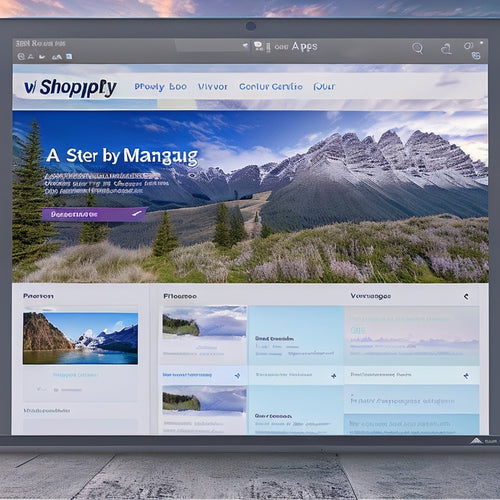
Unravel E-commerce Jargon: Decode Magento Lingo Today
Share
To excel in the e-commerce landscape, understanding Magento terminology is essential. Deciphering e-commerce fundamentals involves recognizing nuances between B2B, B2C, and C2C sites, as well as grasping product management and website functionality. Mastering Magento terminology requires familiarization with its glossary, essential e-commerce vocabulary, and concepts like attributes and configurable products. Lastly, unraveling technical jargon involves breaking down complex terms into key concepts, navigating platform intricacies with confidence, and staying ahead of the competition. By demystifying industry language, you'll reveal the potential to optimize your online store and drive business growth.
Key Takeaways
• Simplify technical terms to grasp e-commerce concepts, including B2B, B2C, and C2C sites, attributes, and APIs for a seamless shopping experience.
• Familiarize yourself with Magento glossary for essential e-commerce vocabulary, including attributes, configurable products, and backend administration.
• Demystify industry language by breaking down technical terminology into key concepts, enabling you to navigate Magento platform intricacies with confidence.
• Mastering e-commerce fundamentals and Magento terminology can drive business growth, enhance customer experience, and provide a competitive edge.
• Decode industry language to optimize your online store, utilizing Magento terminology to improve website functionality and stay ahead in the e-commerce landscape.
Decoding E-commerce Fundamentals
In the ever-evolving landscape of e-commerce, understanding the essential concepts is important for building a successful online store. Grasping these basics is the first step towards creating a seamless shopping experience for customers.
Decoding e-commerce fundamentals begins with simplifying terms and understanding the nuances of online stores, product management, website functionality, and web development and analytics. It's essential to recognize the differences between B2B, B2C, and C2C sites, as well as the role of attributes, APIs, and A/B testing.
Mastering Magento Terminology
Magento, a leading e-commerce platform, has its own distinct terminology that can be overwhelming for newcomers, but understanding these terms is vital for harnessing its full potential and creating a seamless online shopping experience.
Mastering Magento terminology is essential for e-commerce success. To begin, familiarize yourself with the Magento glossary, which includes essential e-commerce vocabulary. Here are four key terms to get you started:
-
Attributes: characteristics of a product, such as color or size.
-
Configurable product: a product with multiple options, like a t-shirt with different colors and sizes.
-
Backend: the administrative interface of your Magento store.
- Extension/module/plugin: a software component that adds functionality to your store.
Unraveling Technical Jargon
Beyond the basics of e-commerce terminology, a deeper understanding of technical jargon is necessary to harness the full potential of your online store and stay ahead in the competitive world of e-commerce.
Unraveling technical jargon requires simplifying complex terms and demystifying industry language. This involves breaking down technical terminology into understandable key concepts, enabling you to navigate the intricacies of your Magento platform with confidence.
Frequently Asked Questions
How Do I Optimize Product Images for Faster Page Loading?
"Imagine a snail-paced website, where visitors flee in frustration. Avoid this nightmare by optimizing product images with compression tools like TinyPNG, and lazy loading techniques, ensuring swift page loads that keep customers engaged and sales soaring."
What Are the Best Practices for Writing Product Descriptions?
When crafting product descriptions, employ a consistent tone that resonates with your target audience, and develop a content strategy that balances informative details with engaging storytelling, ultimately driving sales and customer loyalty.
Can I Customize Magento's Default Email Templates?
To customize Magento's default email templates, focus on email branding by incorporating your brand's visual identity and tone. Perform a template overhaul by editing HTML and CSS files, or utilize third-party extensions for a more streamlined approach.
How Do I Handle Product Returns and Refunds?
"Swiftly streamline returns and refunds by crafting a clear Return Policy, outlining refund timelines and procedures, ensuring seamless Refund Process execution, and integrating it with your Magento store for a hassle-free customer experience."
What Is the Ideal Length for a Product Video?
For peak engagement, prime product video length is 30-60 seconds, allowing concise messaging and mobile optimization; craft a compelling video script that resonates with your audience, ensuring seamless playback on diverse devices.
Related Posts
-
How to Create an HTML Sitemap for Shopify Without Any Apps
This article aims to provide guidance on creating an HTML sitemap for Shopify without relying on any external applic...
-

Perfect Match: Page Builders and Shopify Free Themes
This article explores the combination of page builders and Shopify free themes to enhance the customization options ...
-

Installing Private Shopify Apps: A Step-by-Step Guide
This article presents a comprehensive guide on the installation process of private Shopify apps. Private apps, disti...

